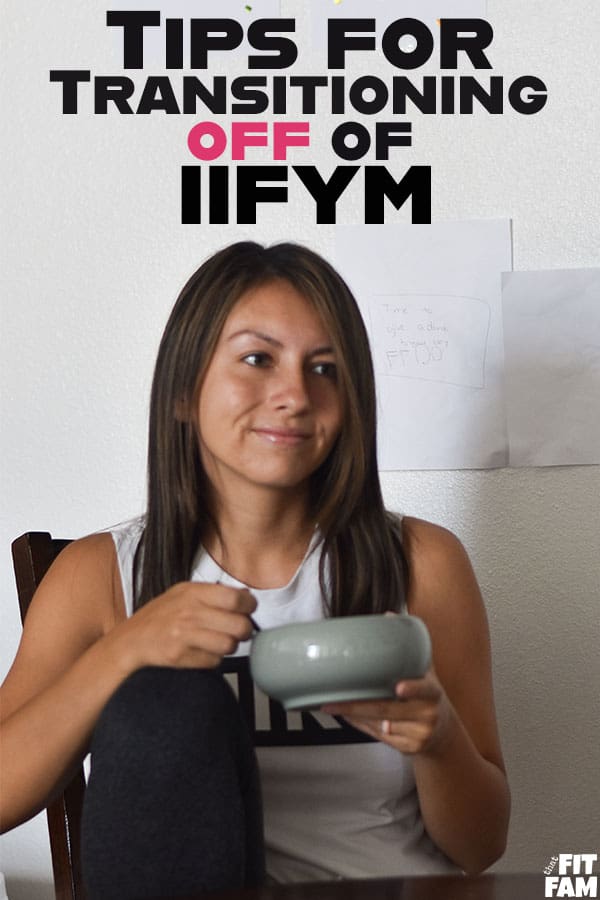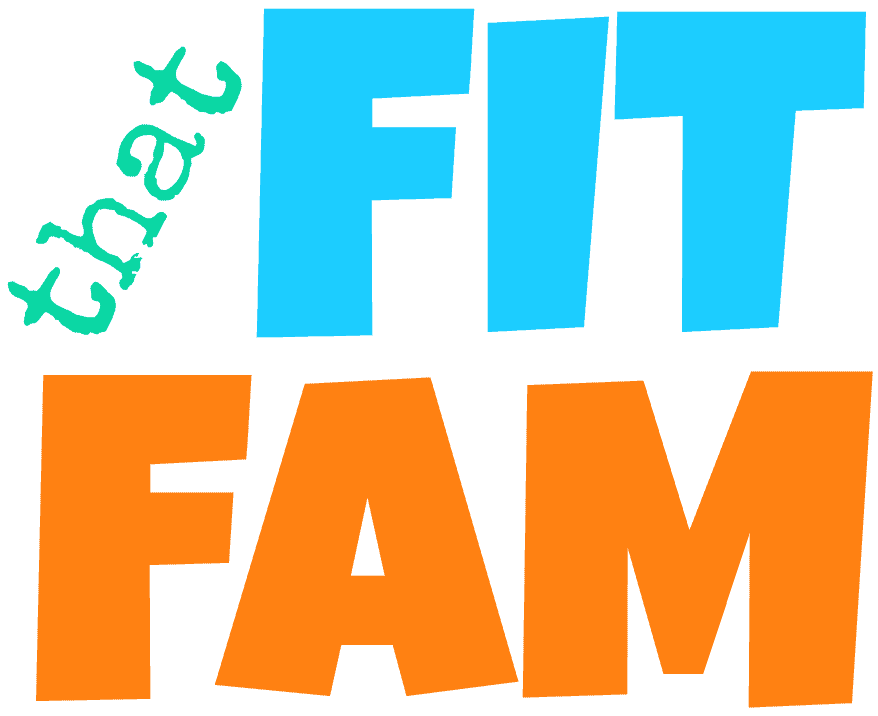I love IIFYM. I do. But, it is not meant to be a forever thing. Transitioning away from IIFYM is something that we will all have to do at some point and it can be scary.

The scariest part about ending the macro counting lifestyle is the fear of gaining weight back. Without weighing every morsel how can you be sure you’re not overeating?
Scott and I have been tracking macros since 2015! After a while it just became a habit. Even a lot of our go-to recipes we have memorized by gram measurements.
Scott is still tracking. I, on the other hand, have started transitioning away.
I decided several months ago that it was time to stop tracking. And while it was hard to give up my logging streak in My Fitness Pal, I am happy I made the decision.

IIFYM healed a lot of my food anxieties and that’s why I loved it so much, but it is not meant to be a forever thing. It is a great way to get in the habit of eating a good ratio of different foods to provide your body with the macro nutrients it needs. But once you have that down, it is okay to transition away.
I have had a lot of success in maintaining my weight but I realized that this doesn’t come so easily for others.

Several people in my IIFYM groups on Facebook have mentioned so much difficulty that they actually gave up on ever transitioning away from IIFYM. Because of this, I decided to share my tips for success.
How to transition away from IIFYM
First off, I wouldn’t call this intuitive eating because if I ate whatever I felt like, it’d be mainly carbs. Instead, I’d call this informed eating. That’s not really a thing, but it probably should be.
- Ease off. I started by taking 1 or 2 days off of tracking at a time. Then I’d track for a week before taking a couple days off again. Eventually I got to the point where I was only tracking breakfast. I did this because it is hard to get your mind away from tracking when you’ve done it every day for years. Going from very controlled to not is too much of a mind trip, so take it slow.
- Eat similar meals. When tracking macros, most people have their go-to meals. The foods that worked best for you while tracking macros are the same foods that will work best for you when you’re not. While following IIFYM, my breakfast was always 1 of 2 things. Now, my breakfast is still that way. If you didn’t eat donuts every day while tracking, don’t start doing it now just because you aren’t tracking.
- Use your knowledge. This is where that informed eating thing comes into play. You’ve been tracking, you should be able to quickly identify which foods are mainly carbs, fats, or protein. Avoid having meals or snacks that are 1 macro nutrient dominate. If you happen to have a lunch that was very carb heavy, then go lighter on the carbs at dinner to balance that out.
- Protein wins. I’ve mentioned before that protein is the most important macro to hit for many reasons. It still is. Always reach for something with protein when you are hungry. It will fill you up. Also, if you are struggling with sugar cravings, you could be low on dopamine. Protein will help you get those levels back up and end those sugar cravings. Find my list of dopamine building foods here.
- Craving sugar? First, eat protein like I mentioned in the last step. But in addition to that, it’s okay to have treats. Just stay in control. When tracking macros, I could almost always fit in 1 treat. What I couldn’t always do is fit in more than that. Those same principles apply here. You want a cookie? That’s probably fine, eat it. Just don’t eat 20 and you’ll be fine. I always try to limit myself to 1 serving of a treat.
- What food to reach for? I prioritize protein and healthy carbs and focus on whole foods. Eating out everyday isn’t realistic when following IIFYM and it still isn’t.
- If your appetite is low. That’s normal. Food is probably not on your mind nearly as much as it used to be. The more you think about something the more you want it & vice versa. If you’re struggling with your appetite and are worried you aren’t eating enough or are losing weight unintentionally, eat larger portions when you do eat. Another good option is to start drinking more protein shakes with calorie add ins like bananas or almond butter.
- Weigh your food. Just because you aren’t tracking, doesn’t mean you have to give up your food scale. Eyeballing portions is hard. I still use my food scale from time to time to make sure I’m eating enough chicken, etc. I also use it whenever I am eating something that is calorie dense, like almond butter. Yesterday, I made nachos and I still weighed out a serving of chips, 15 g of cheese and 85 g of shredded chicken. I have my proportions perfect on my macro friendly nachos, I’m not gonna mess it up by eyeballing just because I’m not logging it anymore.
- Pay attention to your energy levels. Not everyone gets hungry when they’re not eating enough. I personally just get tired. When I have several days in a row where I just can’t seem to make it through my day without feeling like I need a nap, I know I haven’t been eating enough.
Okay, those are my top tips for how I managed to transition away from counting macros and still maintain my weight & strength levels. IIFYM does not have to be a forever thing. I would never want anyone to feel like they have to weigh, track, and log every bite they put into their mouths forever.
Best of luck!
